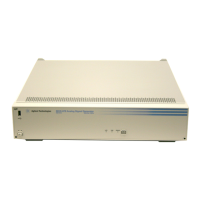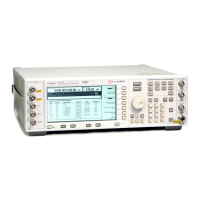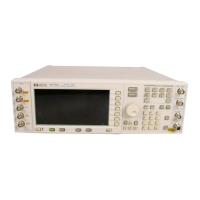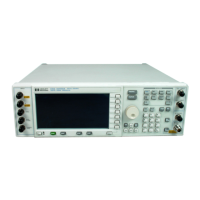Agilent N5181A/82A MXG Signal Generators SCPI Command Reference 157
Component Test Digital Commands
Dual ARB Subsystem–Option 651/652/654 ([:SOURce]:RADio[1]:ARB)
A trigger signal comprises both positive and negative signal transitions (states), which are also called
high and low periods. You can configure the Agilent MXG to trigger on either state of the trigger
signal. It is common to have multiple triggers, also referred to as trigger occurrences or events, occur
when the signal generator requires only a single trigger. In this situation, the Agilent MXG recognizes
the first trigger and ignores the rest.
When you select a trigger mode, you may lose the signal (carrier plus modulating) from the RF
output until you trigger the waveform. This is because the Agilent MXG sets the I and Q signals to
zero volts prior to the first trigger event, which suppresses the carrier. After the first trigger event,
the waveform’s final I and Q levels determine whether you will see the carrier signal or not (zero =
no carrier, other values = carrier visible). At the end of most files, the final I and Q points are set to
a value other than zero.
There are four parts to configuring the trigger:
• Choosing the trigger type, which controls the waveform’s transmission.
• Setting the waveform’s response to triggers:
— CONTinuous, see “:TRIGger:TYPE:CONTinuous[:TYPE]” on page 158
— SINGle, see “:RETRigger” on page 153
— SADVance, see “:TRIGger:TYPE:SADVance[:TYPE]” on page 159
— GATE, selecting the mode also sets the response
• Selecting the trigger source (see “:TRIGger[:SOURce]” on page 160), which determines how the
Agilent MXG receives its trigger signal, internally or externally. The GATE choice requires an
external trigger.
• Setting the trigger polarity when using an external source:
— CONTinuous, SINGle, and SADVance see “:TRIGger[:SOURce]:EXTernal:SLOPe” on page 161
—GATE, see “:TRIGger:TYPE:GATE:ACTive” on page 158
For more information on triggering, see the User’s Guide.
The following list describes the trigger type command choices:
CONTinuous Upon triggering, the waveform repeats continuously.
SINGle Upon triggering, the waveform segment or sequence plays once.
SADVance The trigger controls the segment advance within a waveform sequence. To use this
choice, a waveform sequence must be the active waveform. Ensure that all
segments in the sequence reside in volatile memory.
GATE An external trigger signal repeatedly starts and stops the waveform’s playback
(transmission). The time duration for playback depends on the duty period of the
trigger signal and the gate polarity selection (see “:TRIGger:TYPE:GATE:ACTive” on
page 158). The waveform plays during the inactive state and stops during the
active polarity selection state. The active state can be set high or low. The gate
mode works only with an external trigger source.
*RST CONT
Key Entry Continuous Single Gate Segment Advance
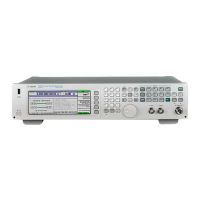
